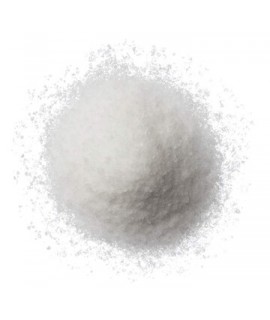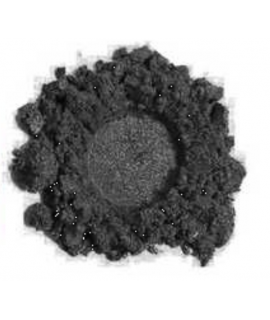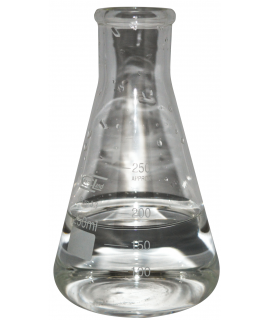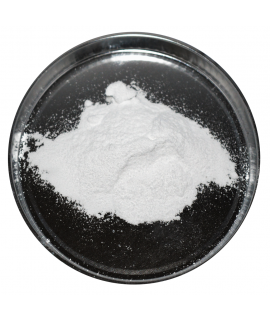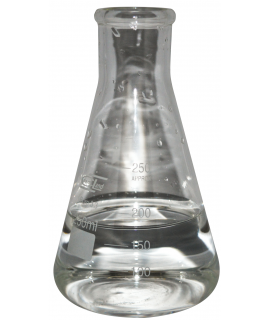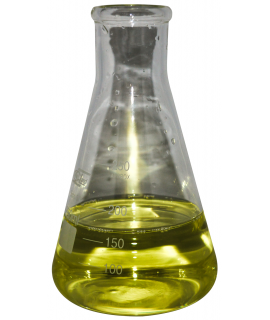ALUMINUM CHLORIDE ANHYDROUS, 99%, kg
7.50 €
Aluminum (III) chloride anhydrous, CAS 7446-70-0, aluminum trichloride anhydrous, INCI ALUMINUM CHLORIDE, trichloroaluminum, pure aluminum chloride
Parameter | Attribute |
Aluminum chloride | Aluminum (III) chloride, aluminum trichloride, trichloralum |
Formula | AlCl3 |
Structure |   |
IUPAC | Aluminum trichloride |
INCI | ALUMINUM CHLORIDE |
CAS | 7446-70-0 |
Molar mass | 133.341 g/mol |
Density | 2.48 g/cm3 |
Solubility | Soluble in hydrochloric acid, ethanol, chloroform, carbon tetrachloride. Sparingly soluble in benzene. In water: 458 g/l (20 °C) |
Aluminum chloride, also known as aluminum trichloride, is an inorganic compound with the formula AlCl3. It is a colorless crystal, but samples are often contaminated with iron(III) chloride, causing them to turn yellow. The anhydrous form is commercially important. It has low melting and boiling points. It is mainly produced and used in the production and use of aluminum metal, but large quantities are also used in other chemical industries.
In the chemical industry, AlCl3 is a common Lewis acid catalyst for Friedel and Kraft reactions, both acylation and alkylation. Important products are surfactants and ethylbenzene. Reactions of this type are the main application of aluminum chloride, for example in the production of anthraquinone (used in the dye industry) from benzene and phosgene. Aluminum chloride is used as a catalyst or as a component of catalytic systems for various chemical reactions. In addition, aluminum chloride is used as an auxiliary in the production of pigments, dyes and colors. It is mainly used to produce green CPC, anthraquinone and other derivatives. CPC green pigments are broad-spectrum organic pigments widely used in the textile industry and printing.
In laboratories it can be used as a source of hydrogen chloride gas. The reaction of anhydrous aluminum chloride with water produces aluminum chloride hydrate and hydrogen chloride gas, which can be used for further testing.
In the manufacture of batteries, aluminum chloride is used as a component and electron donor, thus providing the free electrons needed to produce the necessary amount of electric current. The cathode is aluminum metal, the anode is graphite and the medium is aluminum chloride. The result is a simple acid galvanic cell. In more advanced batteries (lithium-ion), aluminum chloride is also used as one of the components to form complex compounds and thus store and give off an electric current.
In cosmetics, aluminum trichloride is used as an antiperspirant and pore-contracting agent. Due to aluminum's ability to contract tissues, it is widely used in sweating control products. It is most commonly found in antiperspirants to constrict the sweat glands and thus reduce sweating and odor. Its functions (INCI):
- Antiperspirant : Reduces sweating
- Astringent : Helps tighten skin pores
- Deodorant : reduces or masks unpleasant body odor
In the wood industry, aluminum chloride is used to protect wood against rot and wood-eating insects. It can also be found in adhesives specifically designed for bonding wooden surfaces, as aluminum chloride makes the surface rougher to which the adhesive adheres better.
In the paper industry, aluminum chloride is used in the production of parchment paper where additional properties are required, such as non-adhesive, heat-resistant or non-absorbable properties.
In photography, aluminum chloride is used as one of the components in developing photographs.
In the petroleum products industry, aluminum trichloride anhydrous is used both for the purification of petroleum feedstocks and in cracking reactions as a catalyst, and as a constituent in automotive suspension hydraulic fluids, engine oils and greases, and brake fluids.
Important: Add the item to your basket, fill in the recipient's details and confirm your order. Thank you!
To save your precious time, we will deliver your order to your address at a time convenient for You!
*- Pictures of the goods may not reflect the actual appearance, color, assembly or shape of the goods and their packaging. The information in the product description is general and may not correspond to the information on the packaging of the product and may not be accurate as to the use of the product. The information given on the stocks and prices of goods may, in certain cases, differ from the actual prices and stocks of goods
Signal word: Danger |
Hazard icons:
|
Danger phrases: H314 Severe skin burns and eye damage |
Precautionary statements: Precautionary phrases - preventive P260 Do not inhale dust or mist P280 Wear protective gloves/use eye protection/use face protection Use eye and face protection Precautionary statements - rebound P303+P361+P353 IN CASE OF CONTACT WITH SKIN (or hair): immediately remove all contaminated clothing. Wash skin with water [or spray]. P305+P351+P338 IN EYES: wash gently with water for several minutes. Remove contact lenses contact lenses, if present and if easy to do so. Continue to wash eyes Additional hazard information EUH014 Strongly reactive with water. EUH071 Irritating to the respiratory tract. |
Related products
(8 other products in the same category)


